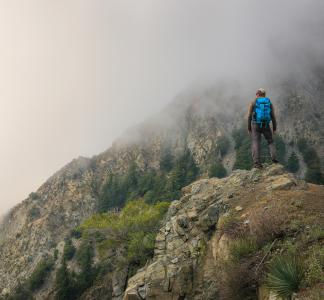President Biden secures legacy with two new national monuments in California

A desert tortoise in Chuckwalla National Monument.
Sam Roberts
New monuments will protect over 848,000 acres.
With the final days of his presidency, Joe Biden has answered the call of local communities in California by designating two new national monuments: Chuckwalla National Monument and Sáttítla Highlands National Monument. These designations—expected to be the last of his presidency—bring the total number of monuments designated by President Biden up to ten and secure a record-setting conservation legacy.

The wild beauty of Chuckwalla Bench, part of the California Desert National Conservation Lands
Sam Roberts
Chuckwalla National Monument will protect iconic California Desert.
Consisting of over 624,000 acres adjacent to Joshua Tree National Park and east of the Coachella Valley, Chuckwalla honors the landscape’s rich cultural significance while safeguarding imperiled wildlife habitat. Significantly, the monument’s management will uniquely balance outdoor recreation, cultural site protection, conservation and responsible renewable energy development.
Here are three things to know about our newest national monument:
- Chuckwalla will bolster outdoor access for local communities. The lands included in the national monument include several popular recreation sites: Painted Canyon in the Mecca Hills, the Corn Springs campground and the Bradshaw Trail. Other points of interest include historic railroad remnants and World War II training sites.
- The landscape is culturally significant for several Indigenous peoples. The Iviatim, Nüwü, Pipa Aha Macav, Kwatsáan and Maara’yam peoples (Cahuilla, Chemehuevi, Mojave, Quechan, and Serrano nations) all call this area their ancestral home—and it still sustains their well-being to this day.
- The monument will safeguard a unique ecosystem. The area known as the Colorado Desert is incredibly biodiverse. Chuckwalla lizard, desert tortoise, desert bighorn sheep, Sonoran pronghorn and countless other native species reside here—but have been increasingly threatened by human development and climate change impacts.

Arctic National Wildlife Refuge, AK
Georgia and Edward Bennett
Sáttítla Highlands National Monument a victory for Tribes and clean water.
Fulfilling a campaign of Indigenous advocacy led by the Pit River Tribe, President Biden has officially designated Sáttítla Highlands National Monument in Northern California! The area—also known as the Medicine Lake Highlands—is nestled within the Shasta-Trinity, Klamath and Modoc National Forests, and the new monument will consist of over 224,000 acres.
Here are three things to know about our newest national monument:
- The landscape is culturally significant for several Indigenous peoples. The Pit River, Modoc, Shasta, Karuk and Wintu Tribes have held Sáttítla as a sacred site for thousands of years. Today, it is still visited for ceremonies, religious practices and cultural gatherings—especially by the Pit River and Modoc Tribes, who regard it as a keystone of their cultural identity.
- Sáttítla is a vital source of clean water for millions of people. Often called the headwaters of the state, the area’s volcanic aquifers send cold, clean water down river and out to the San Francisco Bay—providing drinking water for millions of people in the drought-afflicted state.
- The monument will safeguard Sáttítla from industrial interests. In recent years, energy corporations have sought to take advantage of the area’s unique geology for destructive geothermal development—putting the life-sustaining clean water at risk. Litigation has successfully stopped prior development attempts, but the monument designation will ensure protections last.



